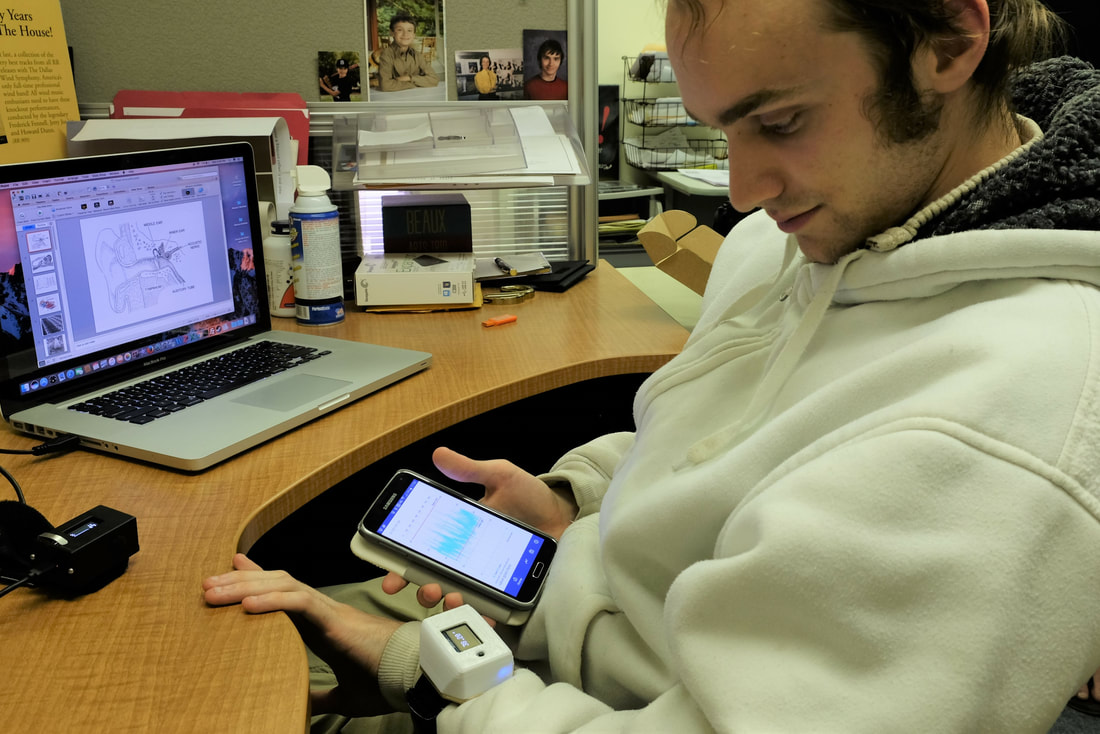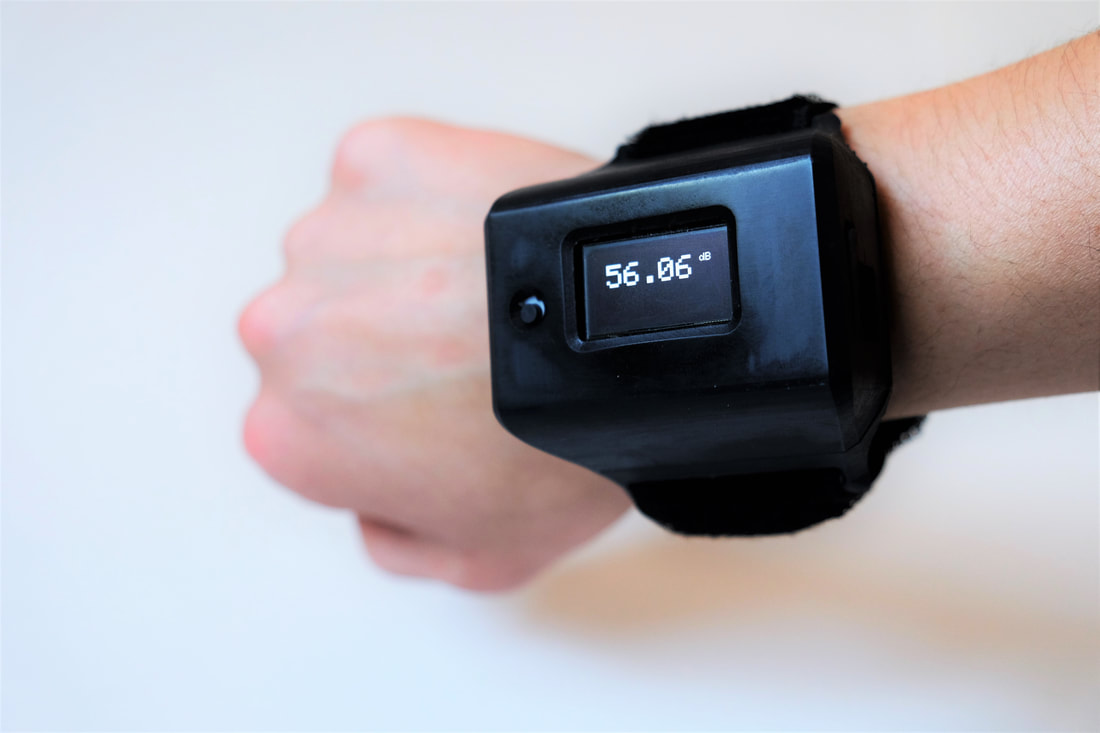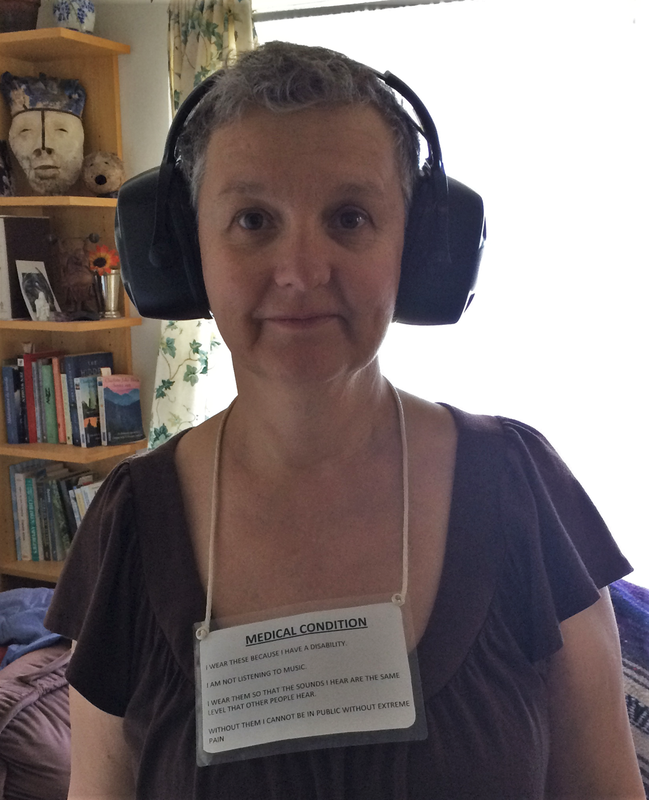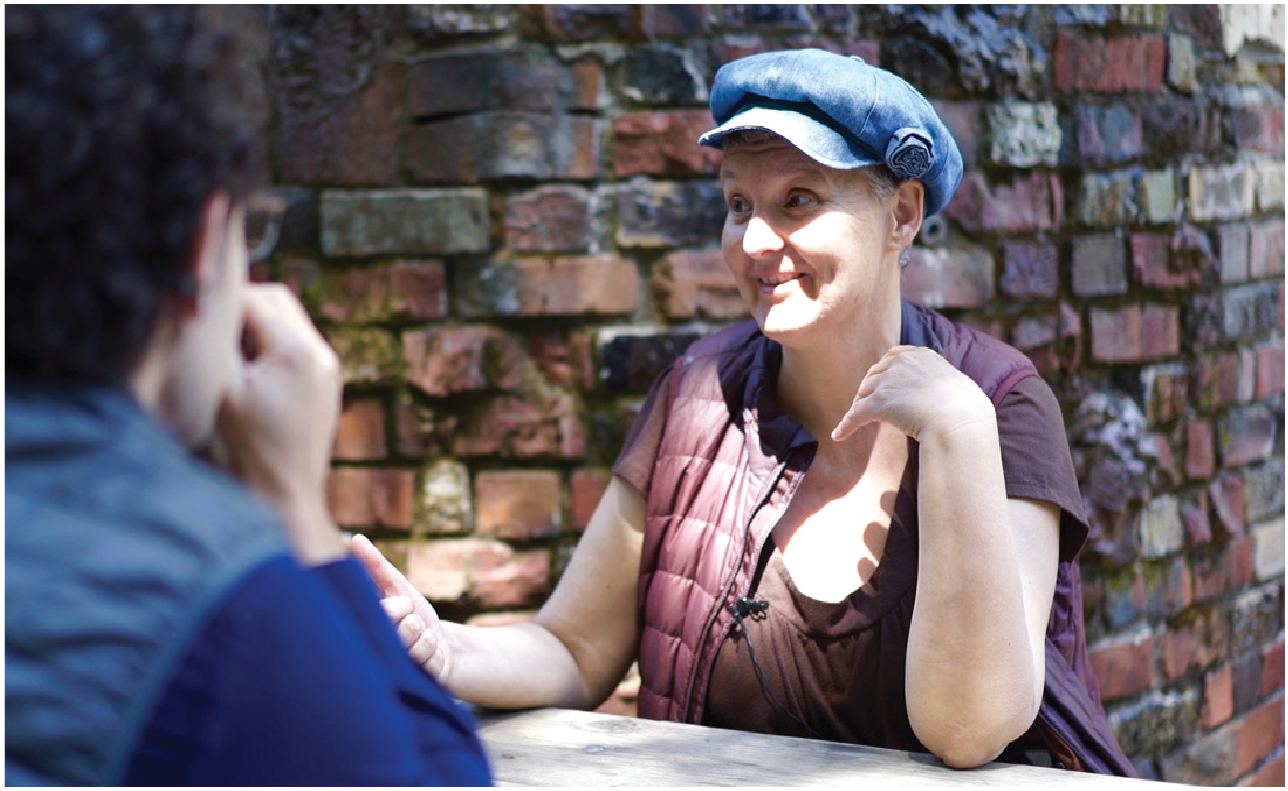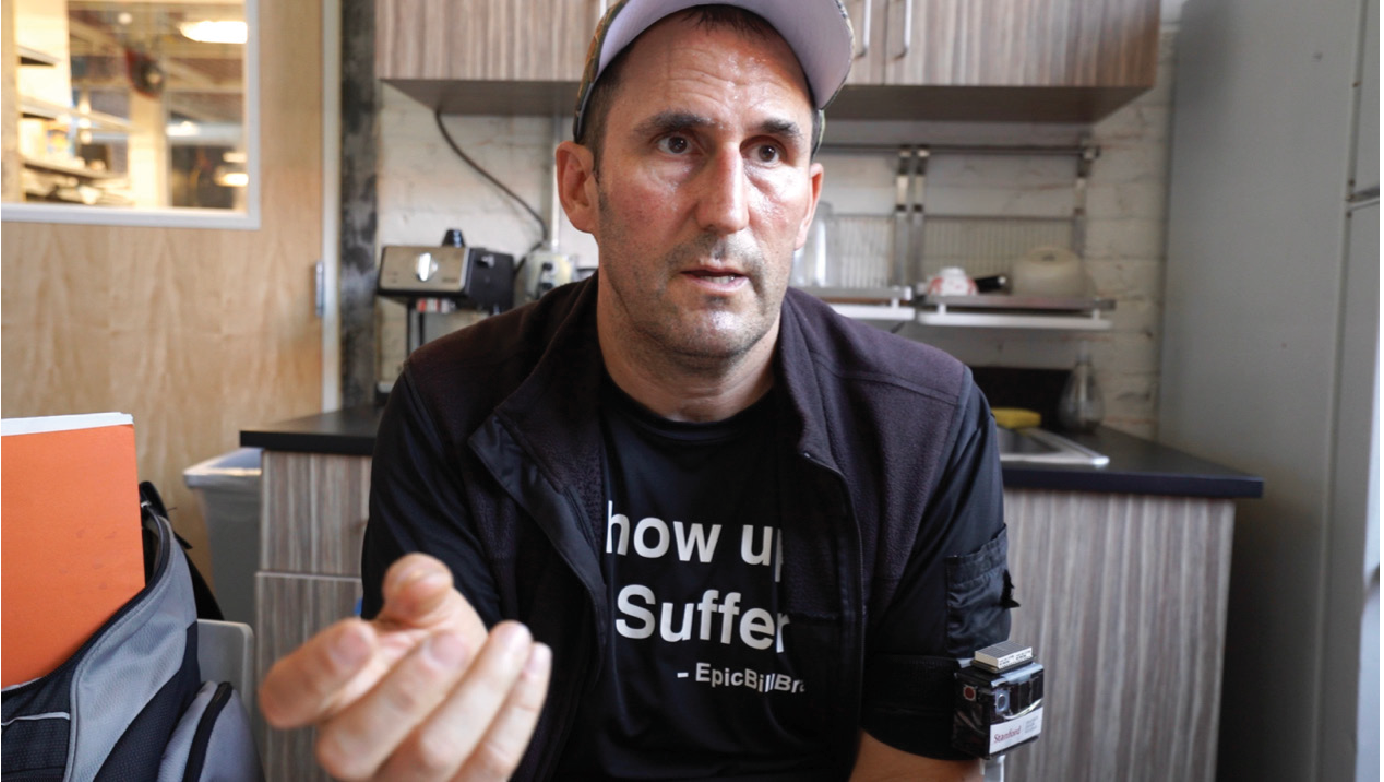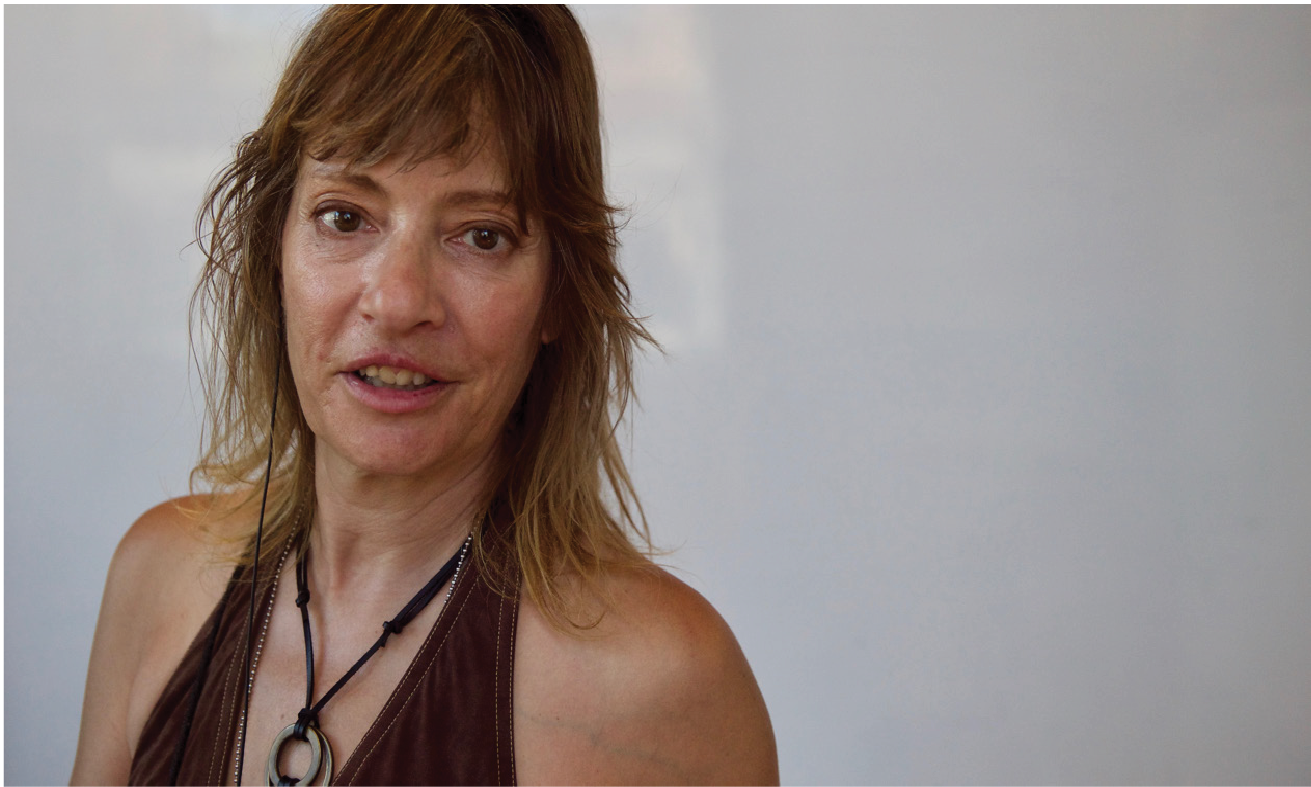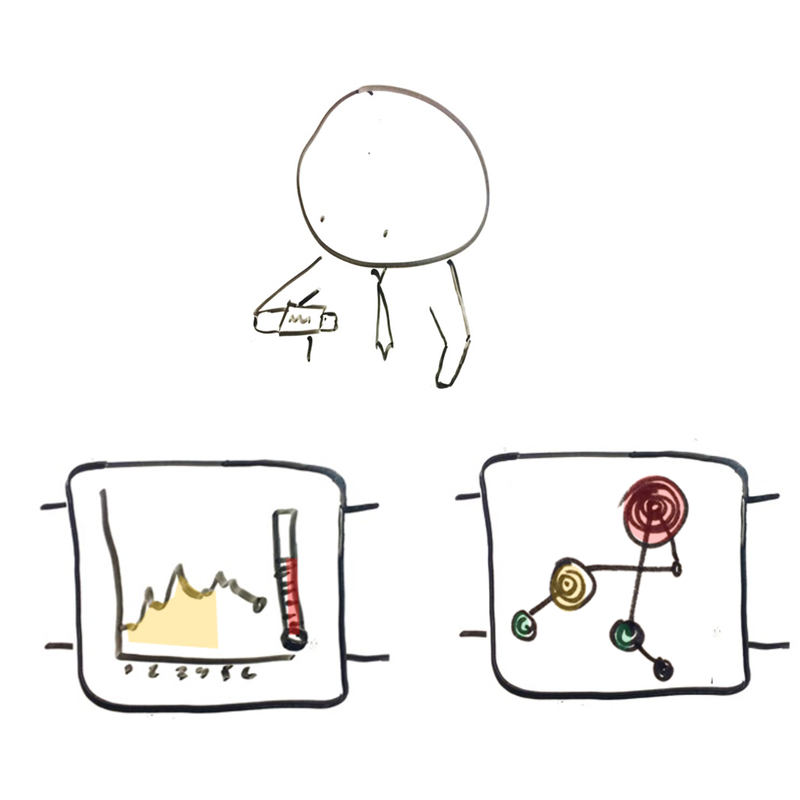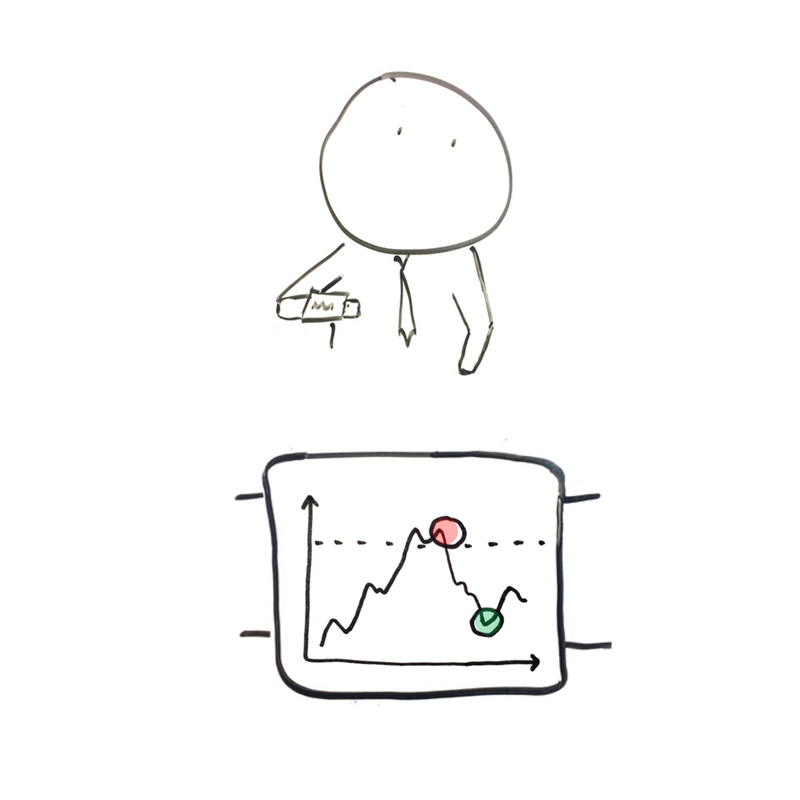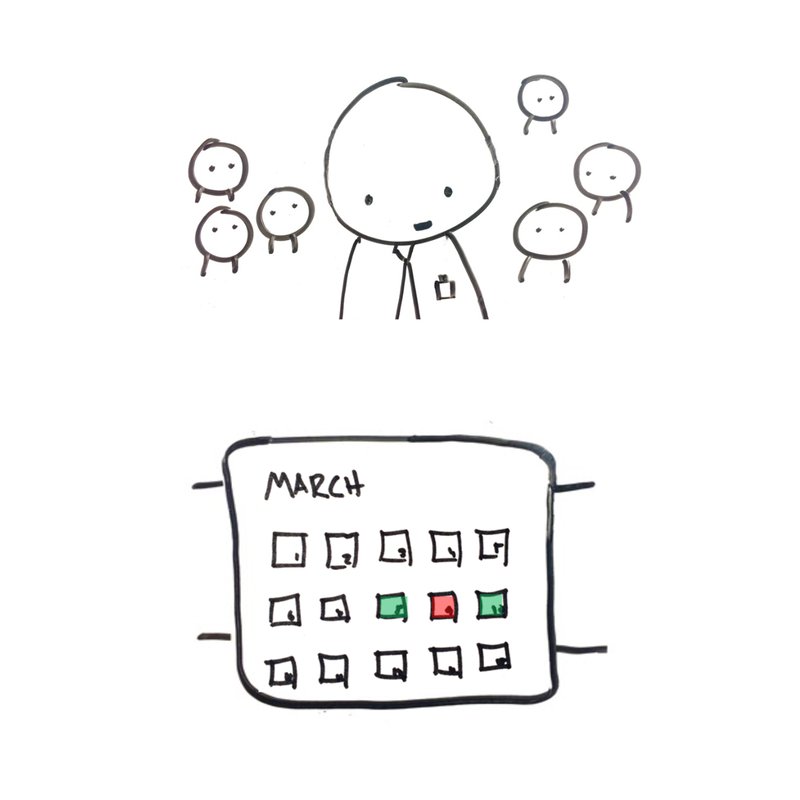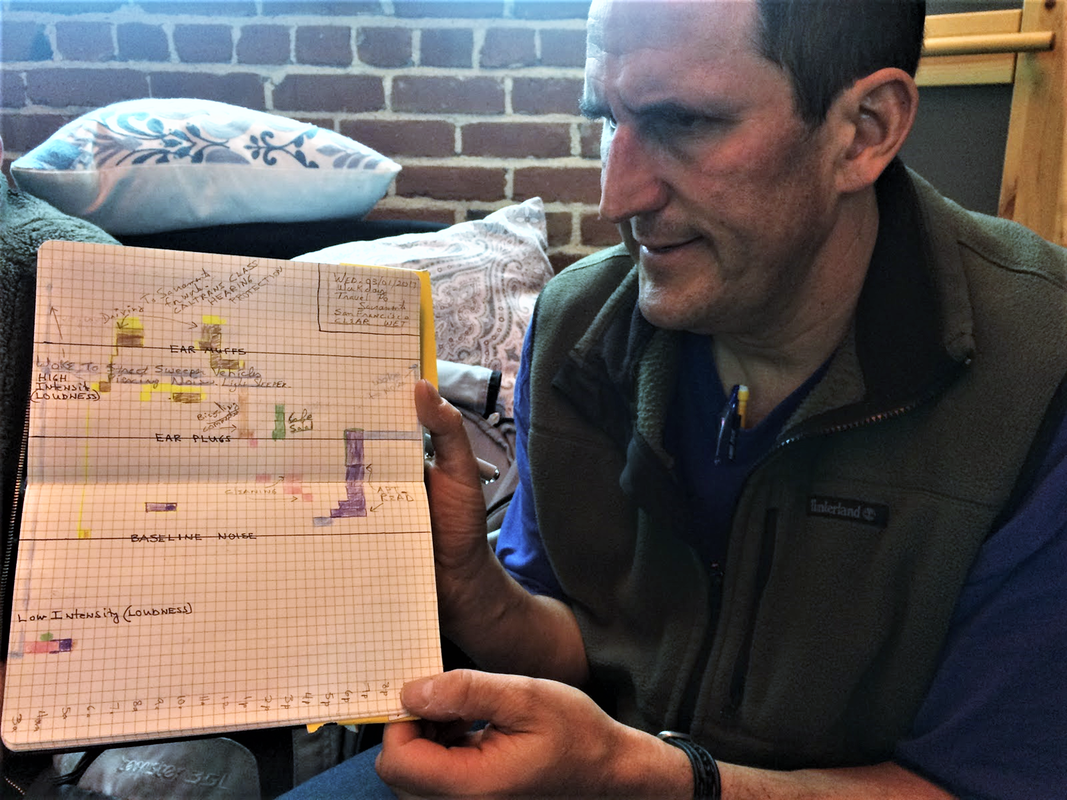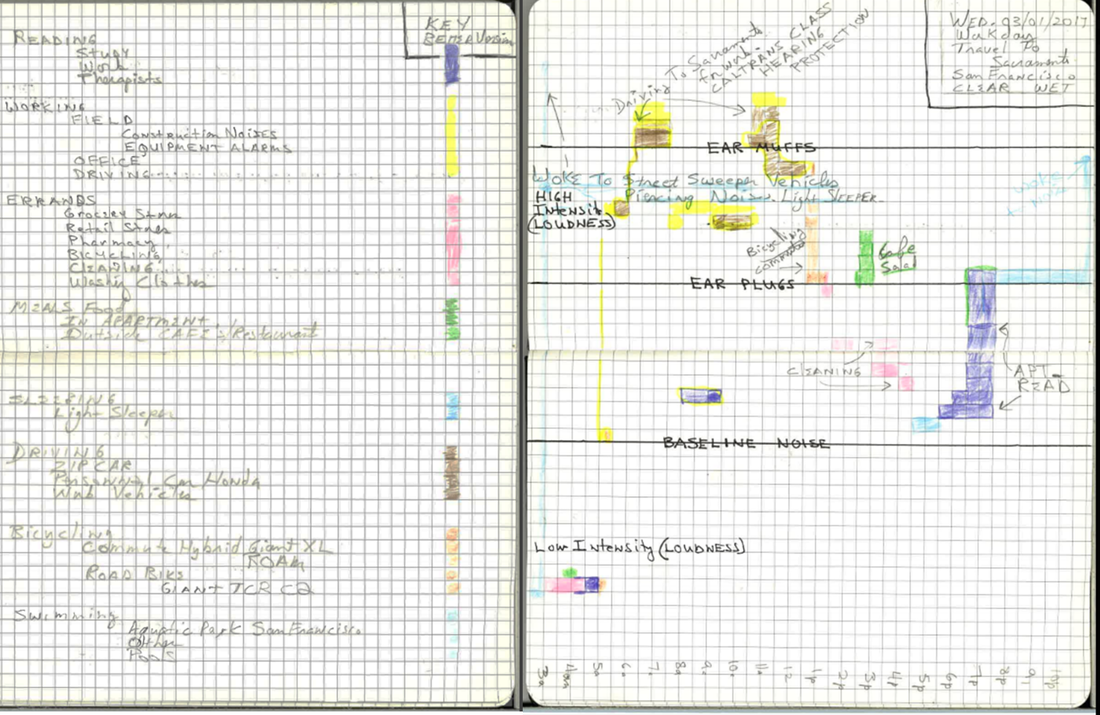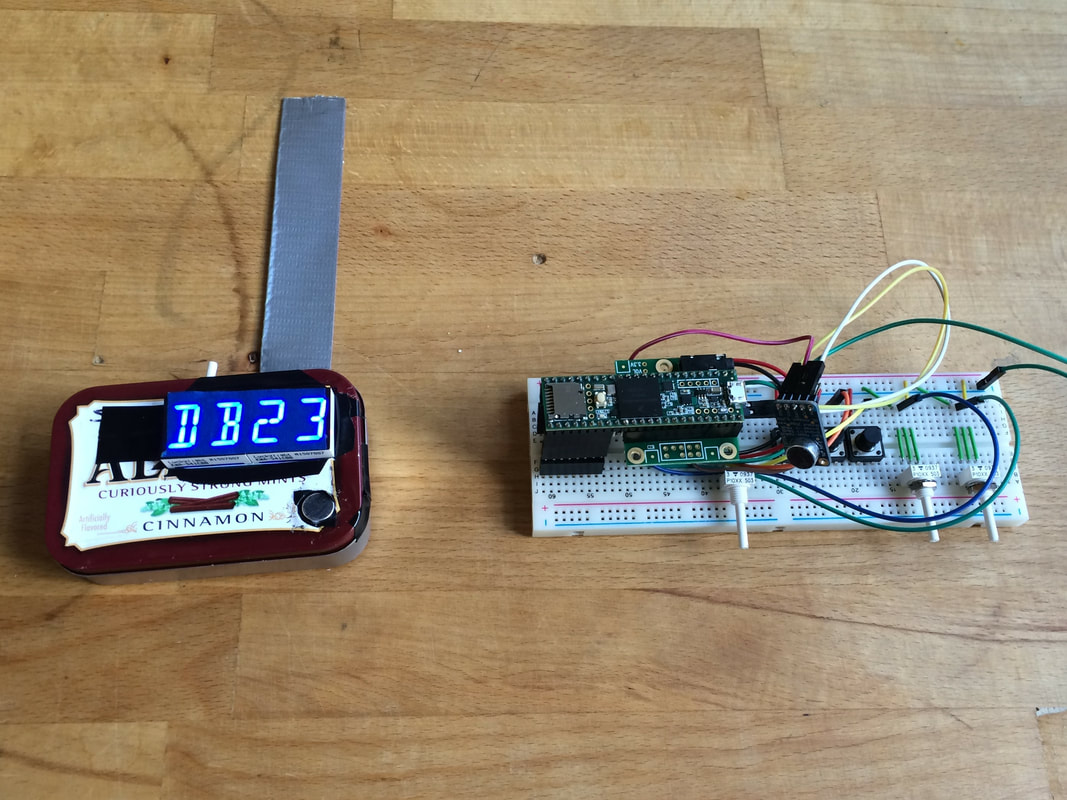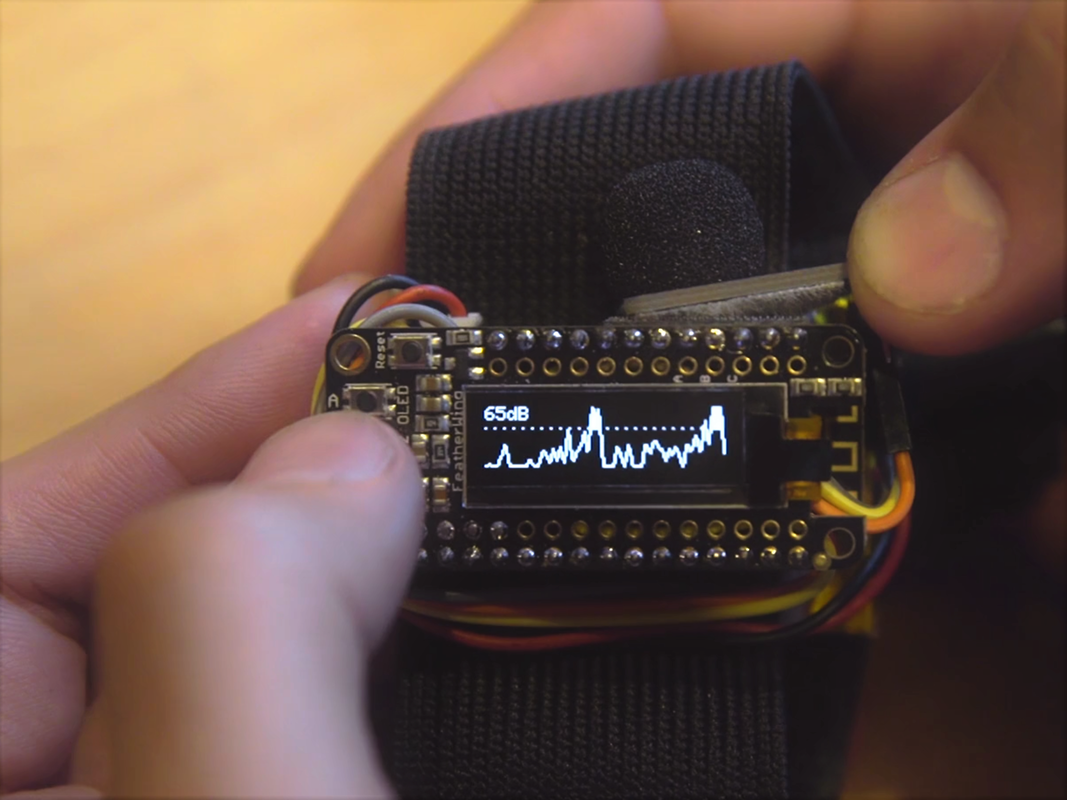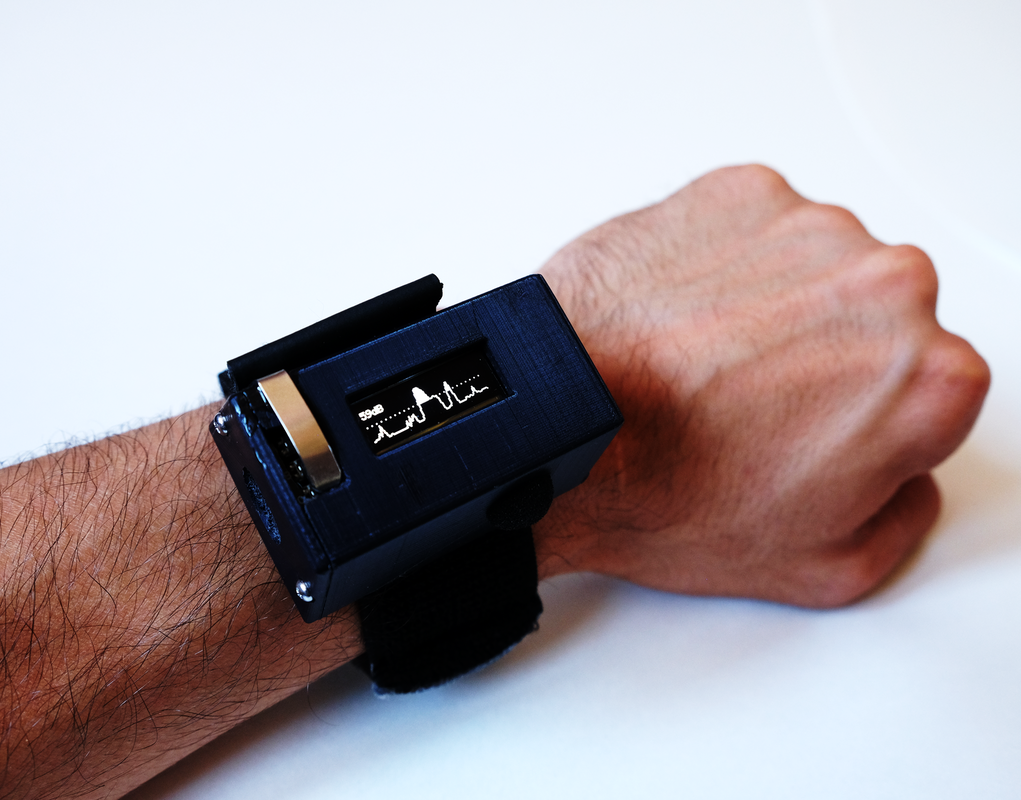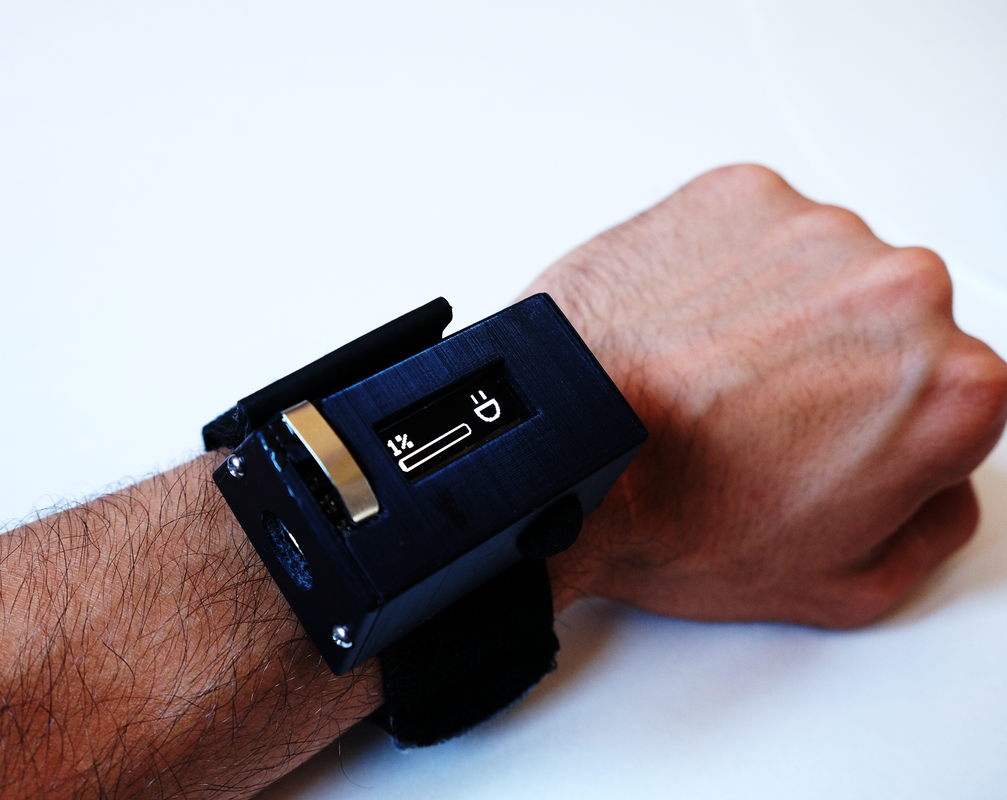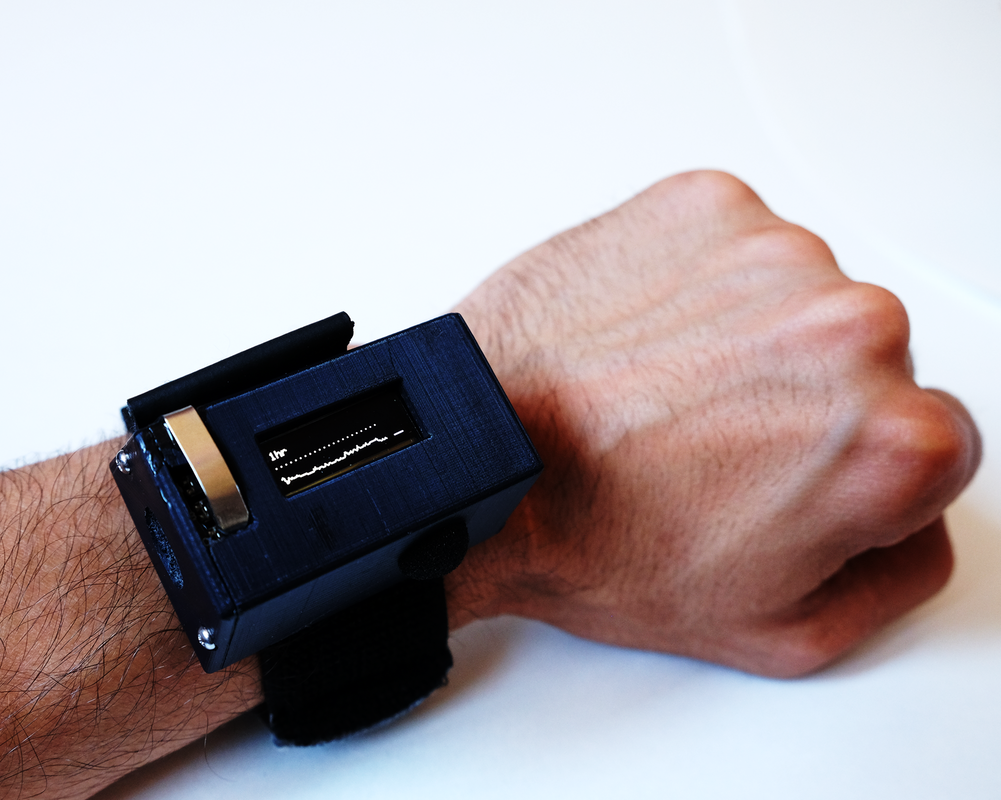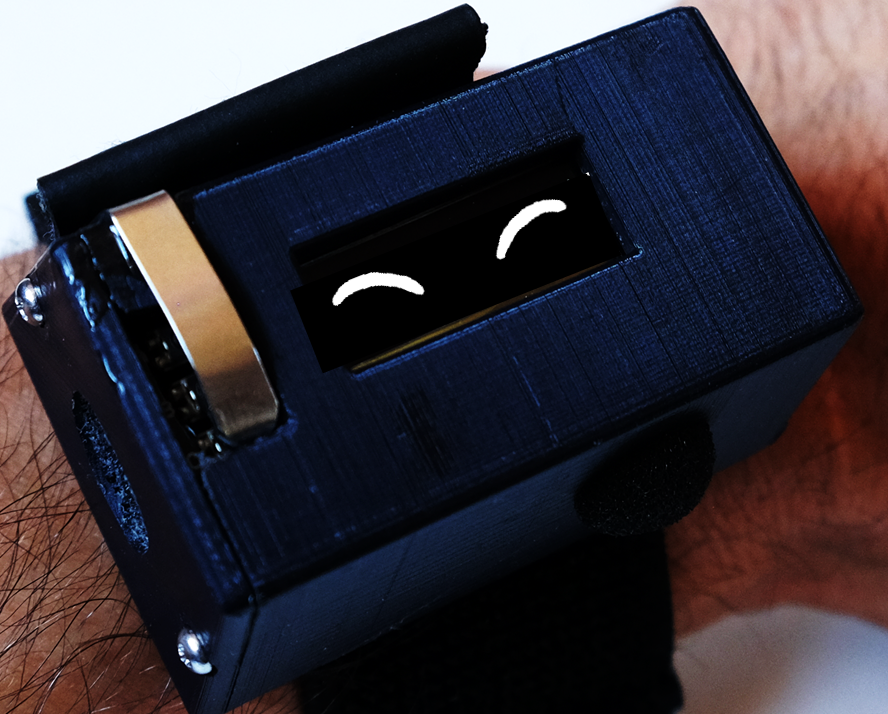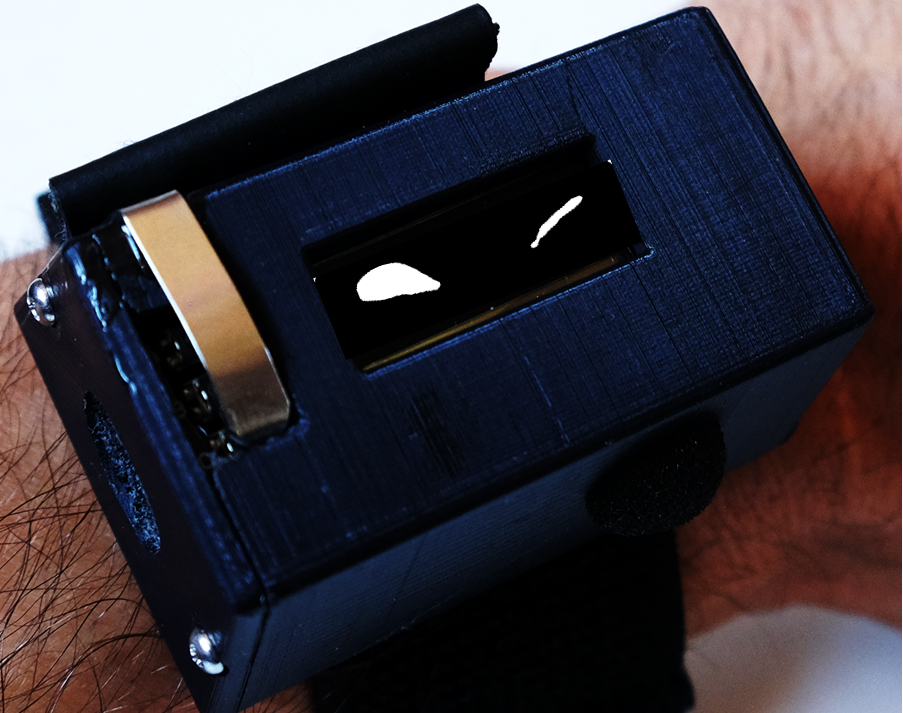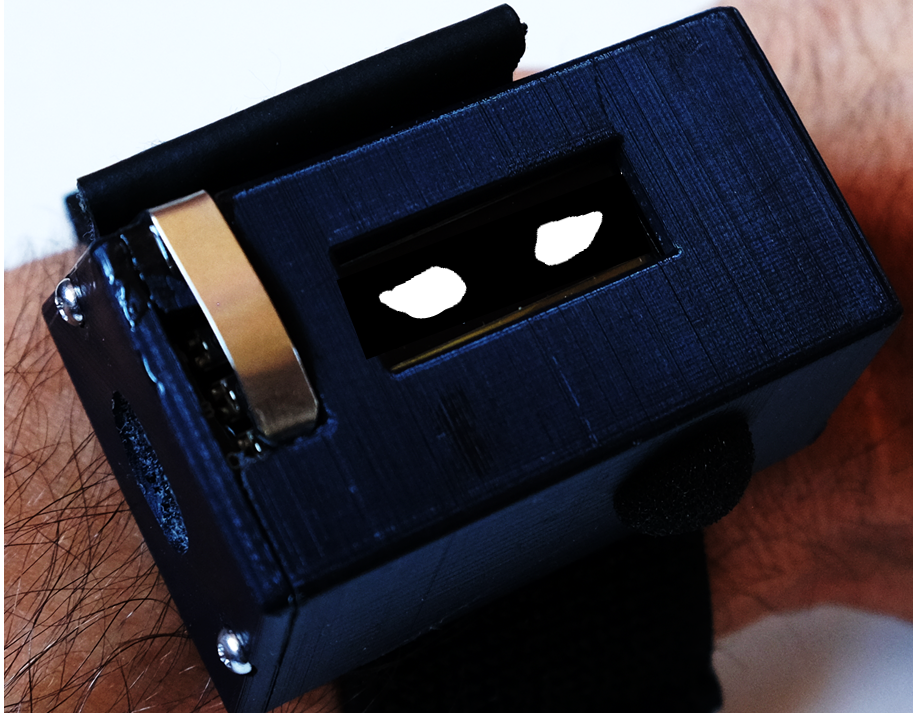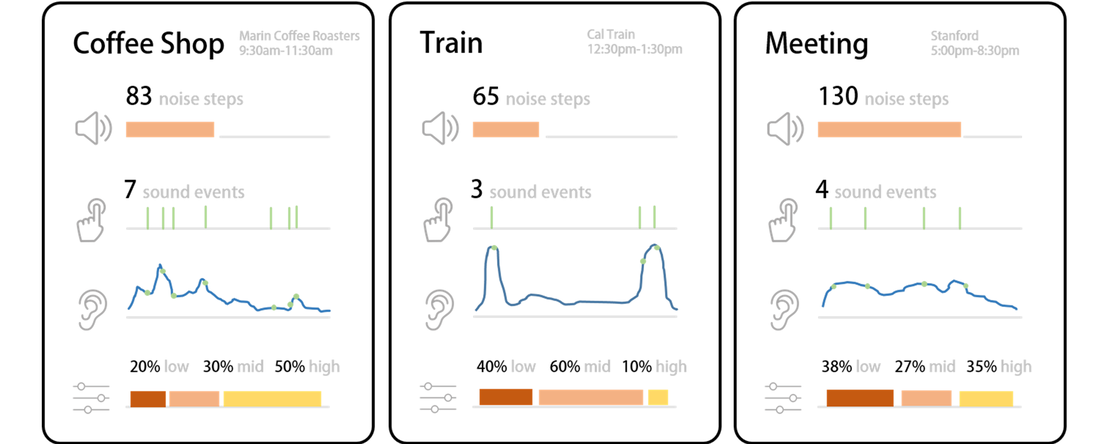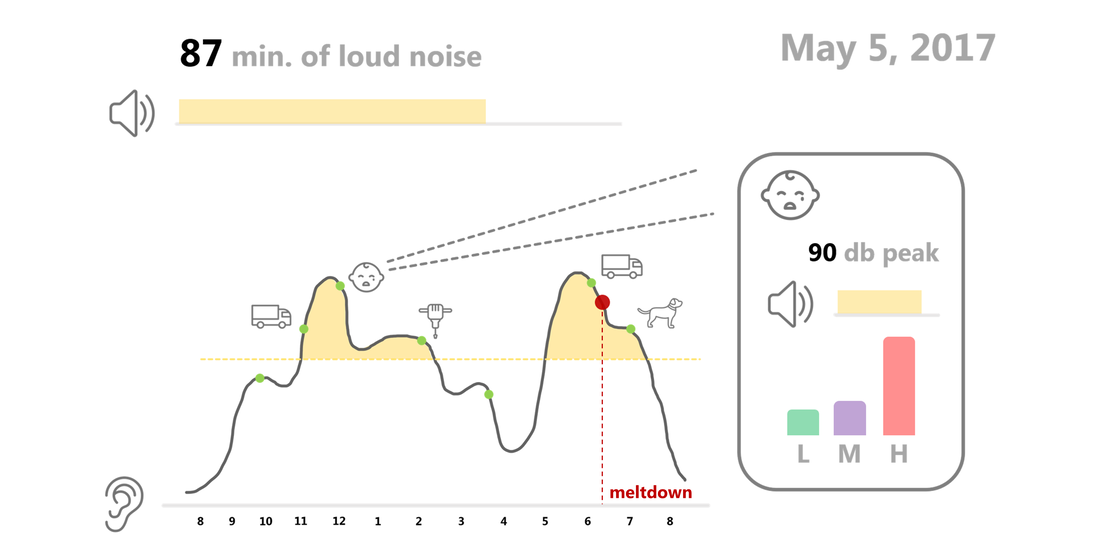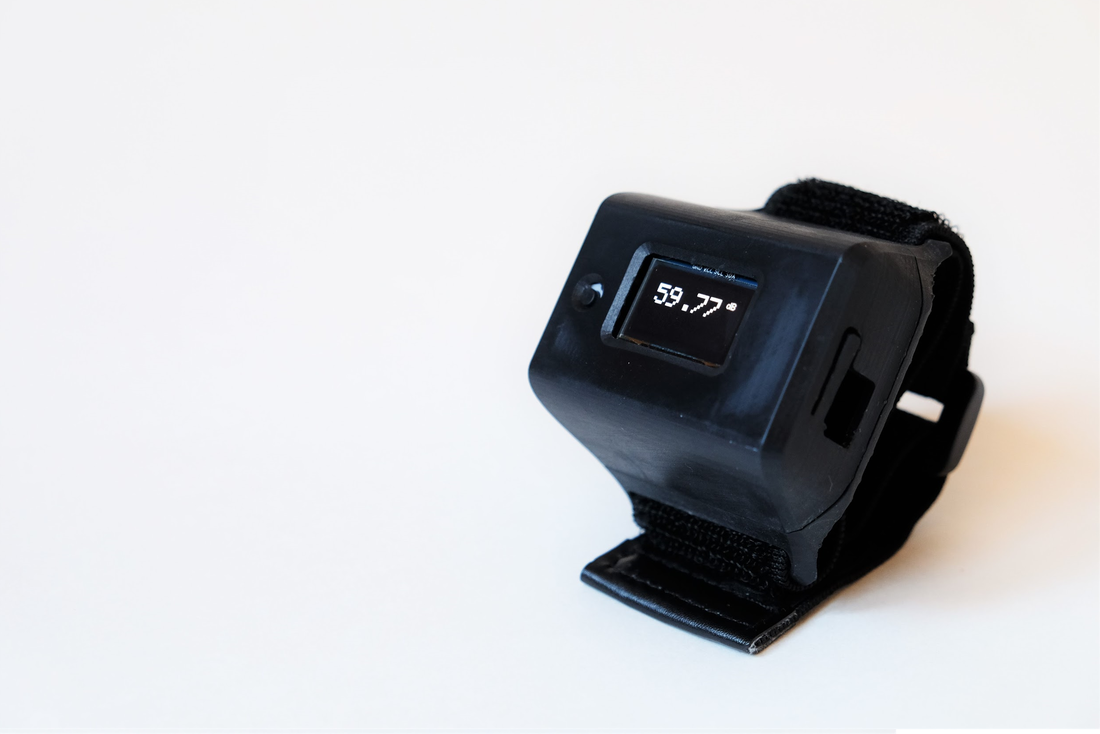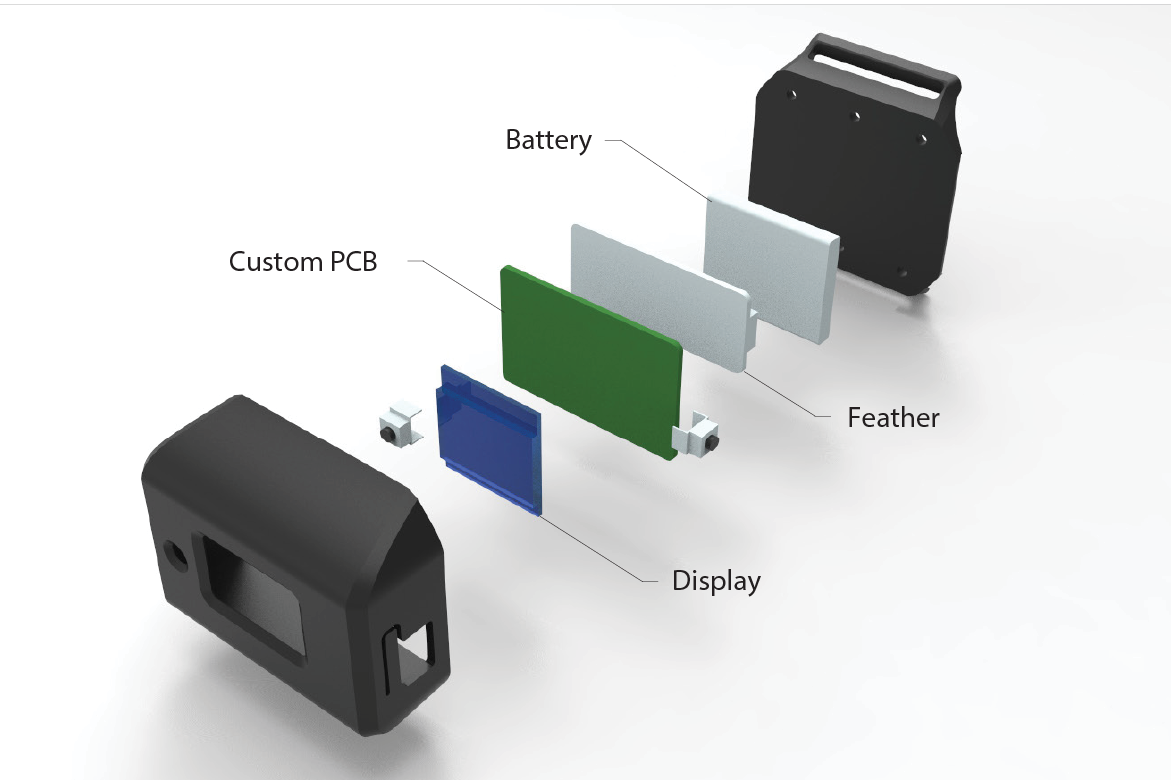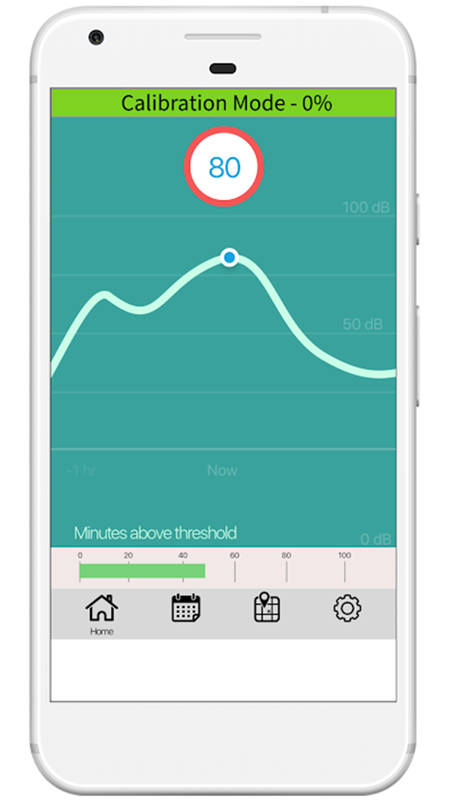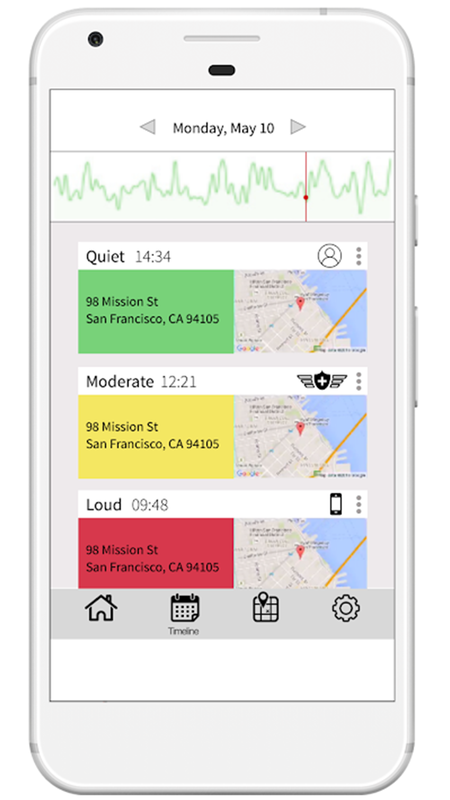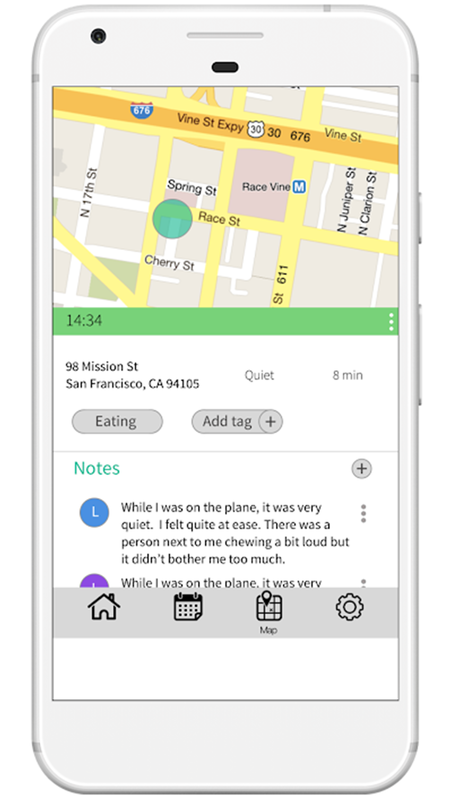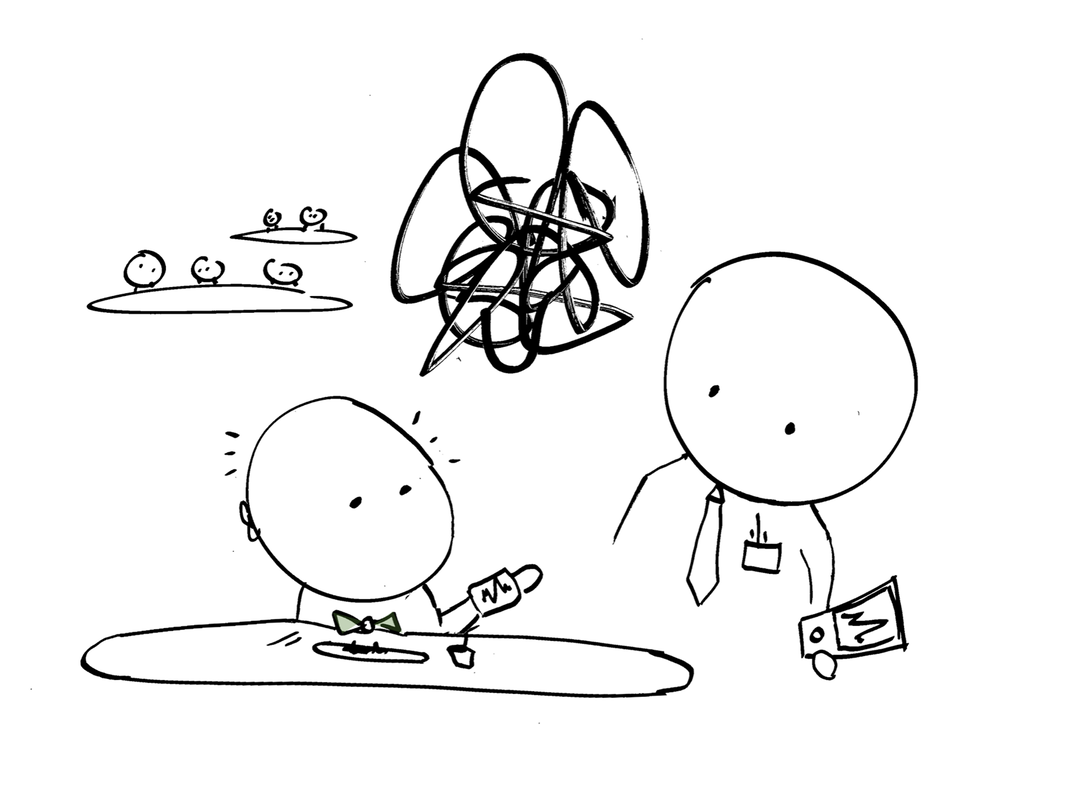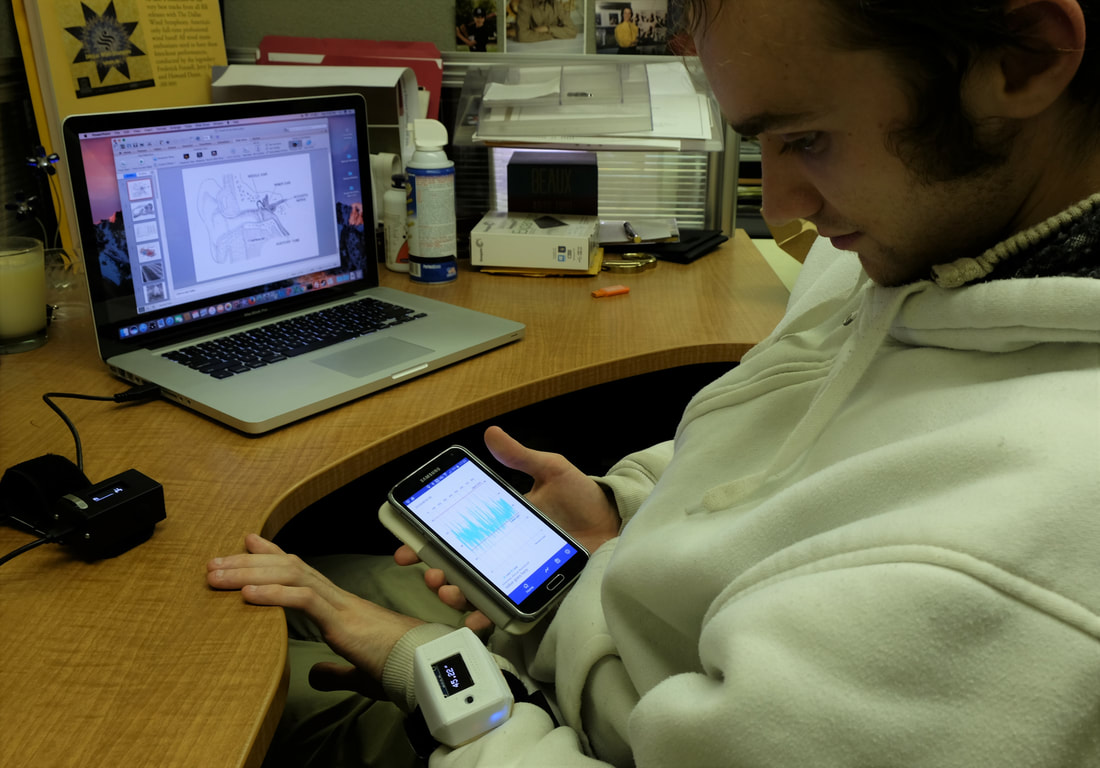The Insight:
Through countless stories we learned that.. The more overstimulated you are, the harder it is to predict your tipping point, communicate your overwhelmed state, and make the decision to escape to a healthier sound environment. so we asked... How might we empower autistic individuals hypersensitive to sound build real-time awareness of personal noise thresholds, self-advocate by communicating noise fatigue, and better plan for overwhelming noisy places? The Solution:
The Prototypes:
We began by first helping people build sound journals. By better understanding their daily sound journeys, tracking and recording hourly sound health, environment, and meltdowns, we could begin to build a language around sound inputs and useful information for tracking daily sound intake. In parallel, we began to build simple wearable prototypes that measured and stored real-time sound data, allowing users to tag and prioritize critical sound events.
We explored what data was helpful for people to know about their soundscapes, learning that individuals need to measure current sound levels to consciously link loudness with environmental factors. As users discovered their own meltdown patterns, it became equally as crucial to measure nearness to sound overload.
What if sound-sensitivity worked like a personal fuel tank, where quiet recovery time replenished energy and degrees of noise depleted patience at different rates? We tested several "sound bank" algorithms and explored how we might express that data in intuitive and easily communicable ways. The emotional expressions below indicate the nearness to sound overload and help individuals better advocate for their own emotional states.
We explored several ways of organizing sound information to make it easier for people to learn from their own sound data and better plan for future stressful sound events. Users found it helpful to organize daily sound experiences both by geographical location and the type of sound event.
How it works:
Level the Noise works as a wearable and app pair. Sound data is collected through several microphones and then pushed via blue-tooth to a phone. In the first week of use, users calibrate the device to understand their typical sound environments, moments of meltdown, and stressful sound events. After calibration, users can begin to organize and categorize sound experiences, tagging sound sources, GPS location, and adding notes to clarify their sound journal. The sound data not only helps autistic individuals become more aware of noise thresholds, but also serves as a tool to help them self-advocate to friends and coworkers when they needed to recharge or change their sound environment.
Next Steps:
Through our research and feedback, we discovered that while level the noise was useful for autistic adults, it may be even more relevant for autistic children at school. With the accompanying app, both parents and teachers could be notified of a child's sound intake and daily noise thresholds. The device could help autistic children better communicate their sound health and sound needs to piers and teachers. We hope to further explore how level the noise can help children with autism create productive learn environments in neuro-typical classrooms. |

